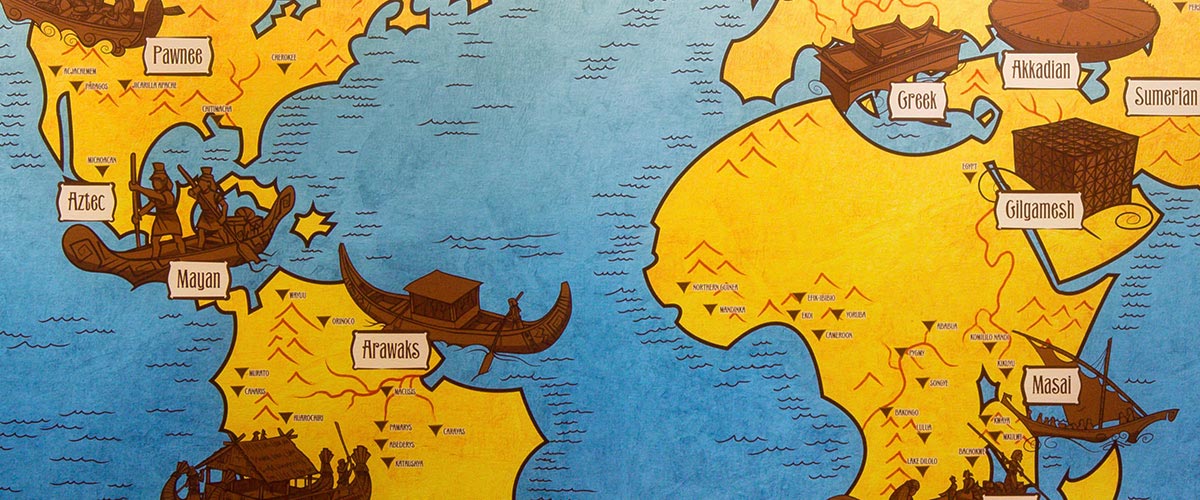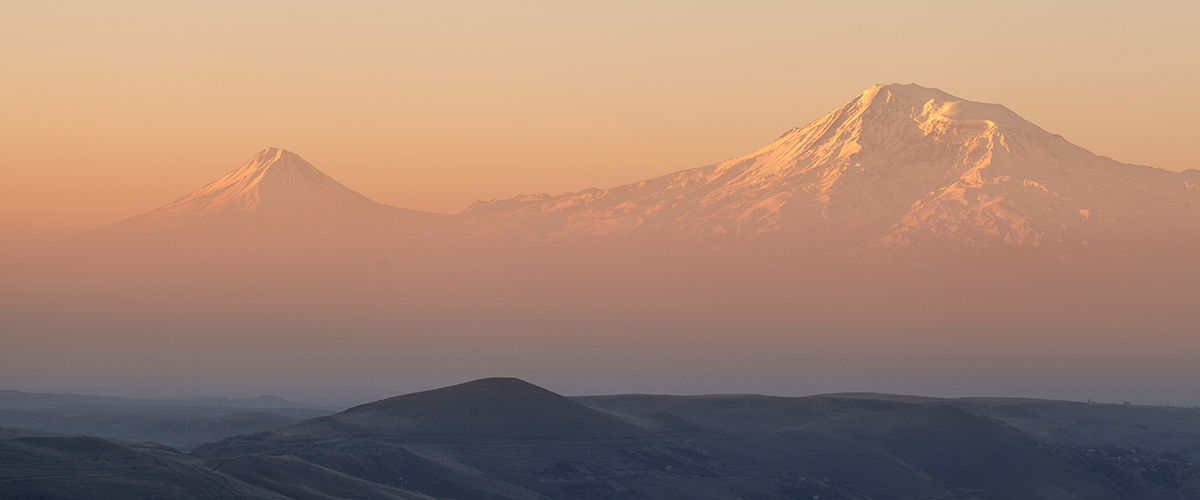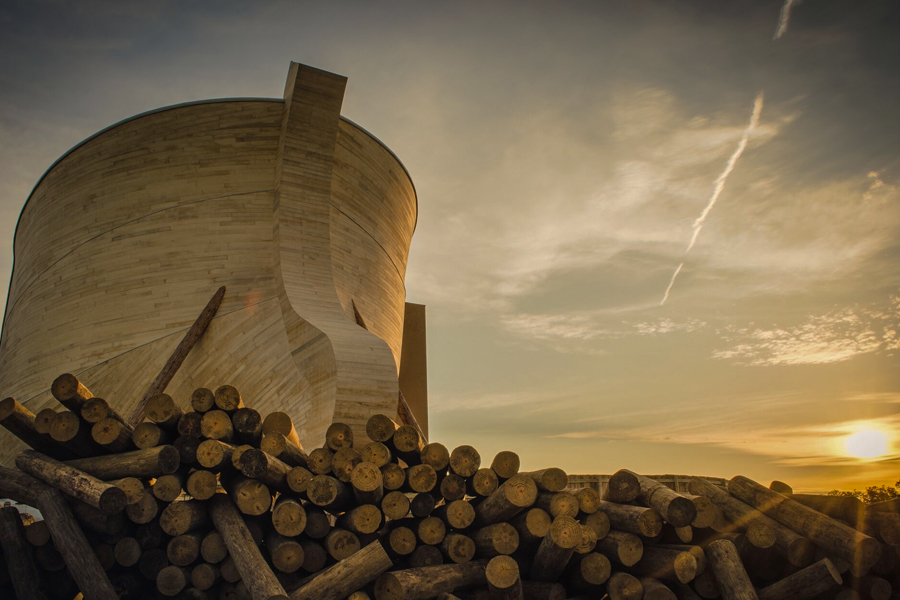Noah’s Ark
What was the real Noah’s ark like? How many animals did the ark carry? Was there a global flood? Here are answers to these questions and more from the Ark Encounter.
The Real Noah’s Ark
The Ark Encounter in Northern Kentucky is a life-sized reconstruction of Noah’s ark. But what about the original ark? What did it look like? How many animals did it carry? Why did Noah build it? Why do we find so many ancient flood myths? Get answers to these questions and more below.
Overview of Noah’s Ark
Noah’s ark was a massive ship, built at God’s command, that saved Noah, his family, and representatives of every kind of land-dependent, air-breathing animal from the global flood that took place over 4,300 years ago.
The ark was 510 feet long, 85 feet wide, and 51 feet high and it housed the several thousand animals God brought to Noah. The global flood lasted about one year. The ark came to rest on the “mountains of Ararat” (Genesis 8:4), and Noah’s family, with all the animals that were saved from the flood, eventually spread throughout the world.

What Did Noah’s Ark Look Like?
Genesis describes the construction of the ark in three verses:
Make yourself an ark of gopher wood. Make rooms in the ark, and cover it inside and out with pitch. This is how you are to make it: the length of the ark 300 cubits, its breadth 50 cubits, and its height 30 cubits. Make a roof for the ark, and finish it to a cubit above, and set the door of the ark in its side. Make it with lower, second, and third decks. (Genesis 6:14–16 ESV)
To understand the actual size of the ark, it’s important to know what a “cubit” is. A cubit is an ancient measurement of length based on the distance from the elbow to the tip of the longest finger. The actual length of a cubit varied between different ancient groups of people. Though the ark’s cubit length is uncertain, it may well have been one of the long or royal cubits (about 20.4–20.6 in.) since many ancient structures were built according to long cubits.
If so, the ark was actually bigger than the size described in most books today, which frequently mention a shorter cubit (if they even bother to try to be accurate). Based on a royal cubit on the short end of the spectrum (20.4 inches), the ark would have been 510 feet long, 85 feet wide, and 51 feet high.
For more information on the size of Noah’s ark, check out How Long Is a Cubit?
Why Did God Tell Noah to Build the Ark?
The Bible tells us why God instructed Noah to build the ark.
Now the earth was corrupt in God’s sight, and the earth was filled with violence. And God saw the earth, and behold, it was corrupt, for all flesh had corrupted their way on the earth. And God said to Noah, “I have determined to make an end of all flesh, for the earth is filled with violence through them. Behold, I will destroy them with the earth.” (Genesis 6: 11–13)
Ever since Adam’s sin, the world had grown increasingly more rebellious. Because of the corruption and violence, God said he would destroy man and all land-dwelling, air-breathing animals on the earth. But Noah found favor with God (Genesis 6:8), so God had mercy on mankind by saving righteous Noah and his family from the impending judgment upon the earth.
For more information on why Noah built the ark, check out Why Build the Ark?

Other Flood Traditions
Did you know there are over 200 myths from all over the world about a major flood?
Since the Bible is God’s Word, we can know that the true account was recorded by Moses and is found in Genesis 6–9. The many flood myths are retellings of the real event that have been distorted through centuries of passing down information. The earliest records of the event date back two millennia before Jesus was born. Some of these traditions are older than Moses’s writings, but that only confirms that these tablets were written earlier, not that the contents were original or correct.
| Myth | Civilization | Similarities to the Biblical Account |
|---|---|---|
| The Epic of Gilgamesh | Mesopotamia | Construction of a boat, destruction of all humanity, dove, raven, sacrifice |
| The Ark of Nu’u | Hawaii | Construction of a boat, Nu’u vs. Noah, rainbow, post-flood sacrifice |
| The Nüwa Flood | China | Construction of a boat, Nüwa vs. Noah, divine judgment |
| Deucalion’s Flood | Greece | Construction of a boat, divine judgment |
| Manu’s Flood | India | Construction of a boat, preserving animals |
| Unu Pachakuti | Inca | Construction of a boat, divine judgment |
| Thai Flood | Thai | Divine judgment on human cruelty |
For more information about other flood traditions, check out World Flood Myths.

Where Is the Real Noah’s Ark Today?
In the past century, dozens of individuals have claimed to have located the ark. Most of these modern searches have focused on Mount Ararat in Eastern Turkey.
In 1949, photographs of the northwest side of Mount Ararat were taken by a United States intelligence agency. A large structure can be seen jutting out of the ice and snow. However, the object in the images may be nothing more than a natural rock formation.
George Hagopian claimed that when he was a young boy in 1908, his uncle took him up Mount Ararat to the Ahora Gorge area. Hagopian said they found a large ship, and he walked on its roof. At least a dozen expeditions have explored the Ahora Gorge since then, but to date, none of these adventurers has found the remains of Noah’s Ark.
Another proposed location is the Durupinar Formation. This “ark-shaped” formation lies approximately 15 miles from the summit of Mt. Ararat. It was popularized by Ron Wyatt, who claimed to have found numerous artifacts in the vicinity to corroborate his claims. Often heralded as the remains of Noah’s ark, the Durupinar site appears to be just one of many similar-looking geologic formations in this region of Turkey.
For more information about the location of the real Noah’s Ark, check out Was Noah’s Ark Found on Mount Ararat?
Frequently Asked Questions about Noah’s Ark

Was Noah’s Ark Found on Mount Ararat?
In the past century, dozens of individuals have claimed to have located the Ark. Most of these modern searches have focused on Mount Ararat in Eastern Turkey.
Find Out More
Bible Story of Noah’s Ark
Noah’s Ark is one of the few Bible stories most people recognize. But how does the popular story compare with what the Bible says?
Find Out More
How Big Was Noah’s Ark?
Few wooden ships have ever come close to the size of Noah’s Ark. It was almost one and a half football fields long and higher than a modern four-story house!
Find Out More